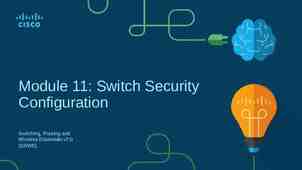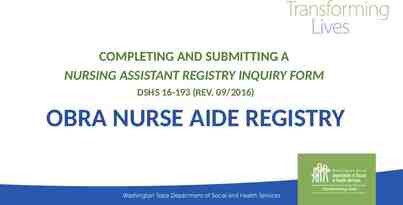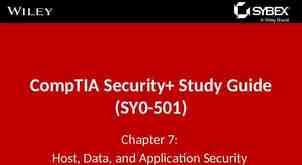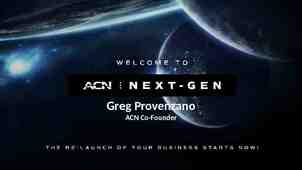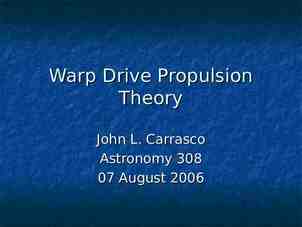1 SCIENCE PASSION TECHNOLOGY Architecture of DB Systems 10 Cloud DBMSs
30 Slides9.01 MB

1 SCIENCE PASSION TECHNOLOGY Architecture of DB Systems 10 Cloud DBMSs Matthias Boehm Graz University of Technology, Austria Computer Science and Biomedical Engineering Institute of Interactive Systems and Data Science BMK endowed chair for Data Management Last update: Jan 13, 2021

2 Announcements/Org #1 Video Recording Link in TeachCenter & TUbe (lectures will be public) Optional attendance (independent of COVID) #2 COVID-19 Restrictions (HS i5) Corona Traffic Light: RED Temporarily webex lectures until end of semester #3 Projects Deadline Jan 21, 11.59pm (soft deadline, submissions accepted until Feb 28) Performance target: T(SUT) 4 * T(ref impl) #4 Course Evaluation and Exam Evaluation period: Dec 15 – Jan 31 Exam date: Feb 19 Architecture (virtual webex oral exams, 45min 706.543 of Database Systems – 10 Cloud DBMSeach) Matthias Boehm, Graz University of Technology, WS 2020/21

3 Agenda Cloud Computing Background PaaS: SQL on Hadoop SaaS: Cloud DBs and Cloud DWHs FaaS: Serverless Database Systems 706.543 Architecture of Database Systems – 10 Cloud DBMS Matthias Boehm, Graz University of Technology, WS 2020/21

4 Cloud Computing Background 706.543 Architecture of Database Systems – 10 Cloud DBMS Matthias Boehm, Graz University of Technology, WS 2020/21

Cloud Computing Background 5 Motivation Cloud Computing Definition Cloud Computing On-demand, remote storage and compute resources, or services User: computing as a utility (similar to energy, water, internet services) Cloud provider: computation in data centers / multi-tenancy Service Models IaaS: Infrastructure as a service (e.g., storage/compute nodes) PaaS: Platform as a service (e.g., distributed systems/frameworks) SaaS: Software as a Service (e.g., email, databases, office, github) Transforming IT Industry/Landscape Since 2010 increasing move from on-prem to cloud resources System software licenses become increasingly irrelevant Few cloud providers dominate IaaS/PaaS/SaaS markets (w/ 2018 revenue): Microsoft Azure Cloud ( 32.2B), Amazon AWS ( 25.7B), Google Cloud (N/A), IBM Cloud ( 19.2B), Oracle Cloud ( 5.3B), Alibaba Cloud ( 2.1B) 706.543 Architecture of Database Systems – 10 Cloud DBMS Matthias Boehm, Graz University of Technology, WS 2020/21

Cloud Computing Background 6 Motivation Cloud Computing, cont. Argument #1: Pay as you go No upfront cost for infrastructure Variable utilization over-provisioning Pay per use or acquired resources 100% Utilization Time Argument #2: Economies of Scale Purchasing and managing IT infrastructure at scale lower cost (applies to both HW resources and IT infrastructure/system experts) Focus on scale-out on commodity HW over scale-up lower cost 100 days @ 1 node Argument #3: Elasticity Assuming perfect scalability, work done in constant time * resources Given virtually unlimited resources allows to reduce time as necessary 1 day @ 100 nodes (but beware Amdahl’s law: max speedup sp 1/s) 706.543 Architecture of Database Systems – 10 Cloud DBMS Matthias Boehm, Graz University of Technology, WS 2020/21

Cloud Computing Background 7 Anatomy of a Data Center Commodity CPU: Xeon E5-2440: 6/12 cores Xeon Gold 6148: 20/40 cores Server: Multiple sockets, RAM, disks Data Center: 100,000 servers [Google Data Center, Eemshaven, Netherlands] Rack: 16-64 servers top-of-rack switch Cluster: Multiple racks cluster switch 706.543 Architecture of Database Systems – 10 Cloud DBMS Matthias Boehm, Graz University of Technology, WS 2020/21

Cloud Computing Background 8 Infrastructure as a Service (IaaS) Overview Resources for compute, storage, networking as a service Virtualization as key enabler (simplicity and auto-scaling) Target user: sys admin / developer Storage Amazon AWS Simple Storage Service (S3) OpenStack Object Storage (Swift) IBM Cloud Object Storage Microsoft Azure Blob Storage Compute Amazon AWS Elastic Compute Cloud (EC2) Microsoft Azure Virtual Machines (VM) IBM Cloud Compute 706.543 Architecture of Database Systems – 10 Cloud DBMS Matthias Boehm, Graz University of Technology, WS 2020/21 Computing as a utility

9 PaaS: SQL on Hadoop 706.543 Architecture of Database Systems – 10 Cloud DBMS Matthias Boehm, Graz University of Technology, WS 2020/21

PaaS: SQL on Hadoop 10 Data-parallel Computation Concept “Data Lake” Store massive amounts of structured and un/semi-structured data (append only, no update in place) No need for architected schema or [Credit: www.collibra.com] upfront costs (unknown analysis) Typically: file storage in open, raw formats (inputs and intermediates) Distributed Storage and Analysis Central abstraction: distributed collection Different physical representations Easy distribution of pairs via horizontal partitioning (aka shards, partitions) Frameworks: Hadoop MR, Spark, Flink Deployment: on-prem and/or cloud Key 4 2 1 3 5 6 7 1 706.543 Architecture of Database Systems – 10 Cloud DBMS Matthias Boehm, Graz University of Technology, WS 2020/21 Value Delta Bravo Alfa Charlie Echo Foxtrot Golf Alfa

PaaS: SQL on Hadoop 11 Recap: MapReduce – Execution Model Input CSV files (stored in HDFS) CSV File 1 CSV File 2 CSV File 3 Split 11 Map-Phase map task Split 12 map task Split 21 map task Split 22 Split 31 Split 32 #1 Data Locality (delay sched., write affinity) #2 Reduced shuffle (combine) #3 Fault tolerance (replication, attempts) [Reduce-Phase] map task map task map task Output Files (HDFS) reduce task Out 1 reduce task Out 2 reduce task Out 3 Shuffle, Merge, [Combine] 706.543 Architecture of Database Systems – 10 Cloud DBMS Sort, [Combine], [Compress] Matthias Boehm, Graz University of Technology, WS 2020/21 w/ #reducers 3

PaaS: SQL on Hadoop 12 A History on “SQL on Hadoop” [Daniel Abadi, Shivnath Babu, Fatma Ozcan, Ippokratis Pandis: Tutorial: SQLon-Hadoop Systems. PVLDB 8(12) 2015] Criticism MapReduce for Data Analytics Litter control of data flow, simplicity leads to inefficiencies Fault tolerance not always necessary Lack of integration into existing eco system of data analysis [Andrew Pavlo et al.: A comparison of approaches to large-scale data analysis. SIGMOD 2009] (see DM Exercise 4) [Spyros Blanas et al.: A comparison of join algorithms for log processing in MapReduce. SIGMOD 2010] SQL on Hadoop Query engines on distributed file systems and open storage formats (e.g., CSV, Sequence files, Avro, Parquet, OCR, Arrow) Challenges w.r.t. metadata (schema/stats), and resource management Non-relational data (e.g., JSON), and unclean, irregular, unreliable data Specialized “SQL on Hadoop” systems (with open / native storage formats) 706.543 Architecture of Database Systems – 10 Cloud DBMS Matthias Boehm, Graz University of Technology, WS 2020/21

PaaS: SQL on Hadoop 13 A History on “SQL on Hadoop” – Systems Hadoop Eco-system HBase: logical tables, CRUD, key-value storage on HDFS Hive: SQL queries executed as MapReduce jobs (OLAP) Hive on Tez/Spark: SQL queries executed as DAGs of operations Proprietary Systems MS SCOPE HadoopDB/Hadapt Teradata (2014) [Ronnie Chaiken et al.: SCOPE: easy and efficient parallel processing of massive data sets. PVLDB 1(2) 2008] [Azza Abouzeid et al.: HadoopDB: An Architectural Hybrid of MapReduce and DBMS Technologies for Analytical Workloads. PVLDB 2(1) 2009] Facebook Presto [Marcel Kornacker et al.: Impala: A Modern, Open-Source SQL Engine for Hadoop. CIDR 2015] Cloudera Impala [Scott C. Gray, Fatma Ozcan, Hebert Pereyra, Bert van der Linden and Adriana Zubiri: SQL-on-Hadoop without compromise, IBM Whitepaper 2014] IBM BigSQL 706.543 Architecture of Database Systems – 10 Cloud DBMS Matthias Boehm, Graz University of Technology, WS 2020/21

PaaS: SQL on Hadoop 14 A History on “SQL on Hadoop” – SparkSQL Overview SparkSQL [Reynold S. Xin, Josh Rosen, Matei New dataframe / dataset abstractions Zaharia, Michael J. Franklin, Scott Shenker, Ion Stoica: Shark: SQL and with various data source ( pushdown) rich analytics at scale. SIGMOD 2013] SQL and programmatic APIs Rewrite ruleset for query optimization [Michael Armbrust et al.: Spark SQL: Relational Data Processing Off-heap data storage (sun.misc.Unsafe) in Spark. SIGMOD 2015] Whole-stage code generation Query Planning 706.543 Architecture of Database Systems – 10 Cloud DBMS Matthias Boehm, Graz University of Technology, WS 2020/21

PaaS: SQL on Hadoop 15 Example Delta Lake (and Lakehouse Architecture) DWH Data Lake Lakehouse SQL Data Frames Metadata APIs TXs DCtlg Open Formats [Michael Armbrust et al: Delta Lake: High-Performance ACID Table Storage over Cloud Object Stores. PVLDB 13(12) 2020] Versioning [Michael Armbrust, Ali Ghodsi, Reynold Xin, Matei Zaharia: Lakehouse: A New Generation of Open Platforms that Unify Data Warehousing and Advanced Analytics, CIDR 2021] 706.543 Architecture of Database Systems – 10 Cloud DBMS Matthias Boehm, Graz University of Technology, WS 2020/21

16 SaaS: Cloud DBs and Cloud DWHs 706.543 Architecture of Database Systems – 10 Cloud DBMS Matthias Boehm, Graz University of Technology, WS 2020/21

SaaS: Cloud DBs and Cloud DWHs 17 Cloud Databases (DBaaS) Motivation DBaaS Simplified setup, maintenance, tuning and auto scaling Multi-tenant systems (scalability, learning opportunities) Different types based on workload (OLTP vs OLAP, NoSQL) Microsoft Elastic Data Warehouses Motivation: Intersection of data warehousing, cloud computing, distributed storage Example Systems #1 Snowflake Commonalities: SQL, column stores, #2 Google BigQuery (Dremel) data on object store / DFS, #3 Amazon Redshift elastic cloud scaling Azure SQL Data Warehouse / #4 Azure SQL Database Hyperscale (Socrates) 706.543 Architecture of Database Systems – 10 Cloud DBMS Matthias Boehm, Graz University of Technology, WS 2020/21

SaaS: Cloud DBs and Cloud DWHs 18 Example Snowflake Motivation (impl started late 2012) [Benoît Dageville et al.: The Snowflake Elastic Data Warehouse. SIGMOD 2016] Enterprise-ready DWH solution for the cloud (elasticity, semi-structured) Pure SaaS experience, high availability, cost efficient Cloud Services Manage virtual DHWs, TXs, and queries Meta data and catalogs Virtual Warehouses Query execution in EC2 Caching/intermediates Data Storage Storage in AWS S3 PAX / hybrid columnar Min-max pruning 706.543 Architecture of Database Systems – 10 Cloud DBMS Matthias Boehm, Graz University of Technology, WS 2020/21

SaaS: Cloud DBs and Cloud DWHs 19 Example Google BigQuery Background Dremel [Sergey Melnik et al.: Dremel: Interactive Analysis of Web-Scale Datasets. PVLDB 3(1) 2010] Scalable and fast in-situ analysis of read-only nested data (DFS, BigTable) Data model: protocol buffers - strongly-typed nested records Storage model: columnar storage of nested data (efficient splitting and assembly records) Query execution via multi-level serving tree BigQuery System Architecture Public impl of internal Dremel system (2012) SQL over structured, nested data (OLAP, BI) Extensions: web Uis, REST APIs and ML Data storage: Colossus (NextGen GFS) [Kazunori Sato: An Inside Look at Google BigQuery, Google BigQuery White Paper 2012.] 706.543 Architecture of Database Systems – 10 Cloud DBMS Matthias Boehm, Graz University of Technology, WS 2020/21

SaaS: Cloud DBs and Cloud DWHs 20 Example Amazon Redshift Motivation (release 02/2013) Simplicity and cost-effectiveness (fully-managed DWH at petabyte scale) [Anurag Gupta et al.: Amazon Redshift and the Case for Simpler Data Warehouses. SIGMOD 2015] [Mengchu Cai et al.: Integrated Querying of SQL database data and S3 data in Amazon Redshift. IEEE Data Eng. Bull. 41(2) 2018] System Architecture Data plane: data storage and SQL execution Control plane: workflows for monitoring, and managing databases, AWS services Data Plane Initial engine licensed from ParAccel Leader node sliced compute nodes in EC2 (with local storage) Replication across nodes S3 backup Query compilation in C code Support for flat and nested files 706.543 Architecture of Database Systems – 10 Cloud DBMS Matthias Boehm, Graz University of Technology, WS 2020/21

SaaS: Cloud DBs and Cloud DWHs 21 Example Microsoft Hyperscale (OLTP) [Panagiotis Antonopoulos et al.: Socrates: The New SQL Server in the Cloud. SIGMOD 2019] Overview Challenges of monolithic DBMSs in the cloud (cost-elasticity scale-out/in data movement, availability/SW updates) Socrates: new OLTP cloud database system Azure DB Hyperscale Key Features Separated Compute, Storage, Log SQL Server compute node w/ secondary and SSD-based caching 128GB Page Servers up to 100TB DB Log server (landing zone, long-term log storage) Azure storage layer Period checkpointing [Microsoft Mechanics: What is Azure Database Hyperscale?, https://www.youtube.com/watch?v Z9AFnKI7sfI ] 706.543 Architecture of Database Systems – 10 Cloud DBMS Matthias Boehm, Graz University of Technology, WS 2020/21

SaaS: Cloud DBs and Cloud DWHs 22 Example Dynamo (KV Store) Motivation [Giuseppe DeCandia et al: Dynamo: amazon's highly available keyvalue store. SOSP 2007] Simple, highly-available data storage for small objects in 1MB range Aim for good load balance (99.9th percentile SLAs) #1 System Interface Simple get(k, ctx) and put(k, ctx) ops #2 Partitioning Consistent hashing of nodes and keys on circular ring for incremental scaling Nodes hold multiple virtual nodes for load balance (add/rm, heterogeneous) #3 Replication Each data item replicated N times (at coord node and N-1 successors) Eventual consistency with async update 706.543 Architecture of Database Systems – 10 Cloud DBMS propagation based on vector clocksof Technology, WS 2020/21 Matthias Boehm, Graz University Amazon e-Commerce Platform

23 FaaS: Serverless Database Systems 706.543 Architecture of Database Systems – 10 Cloud DBMS Matthias Boehm, Graz University of Technology, WS 2020/21

FaaS: Serverless Database Systems 24 Serverless Computing Definition Serverless [Joseph M. Hellerstein et al: Serverless Computing: One Step Forward, Two Steps Back. CIDR 2019] FaaS: functions-as-a-service (event-driven, stateless input-output mapping) Infrastructure for deployment and auto-scaling of APIs/functions Examples: Amazon Lambda, Microsoft Azure Functions, etc Event Source (e.g., cloud services) Lambda Functions Other APIs and Services Auto scaling Pay-per-request (1M x 100ms 0.2 ) import com.amazonaws.services.lambda.runtime.Context; Example import com.amazonaws.services.lambda.runtime.RequestHandler; public class MyHandler implements RequestHandler Tuple, MyResponse { @Override public MyResponse handleRequest(Tuple input, Context context) { 706.543 Architecture of Database Systems – 10 Cloud DBMS return expensiveStatelessComputation(input); Matthias Boehm, Graz University of Technology, WS 2020/21

FaaS: Serverless Database Systems 25 Applications Embarrassingly-Parallel Use Cases Stateless image/video processing (thumbnails, encoding, rendering) ML inference/scoring (e.g., object classification and detection) Distributed compilation, unit testing Data Analytics – CloudSort (http://sortbenchmark.org/) [Qifan Pu, Shivaram Venkataraman, Ion Stoica: Shuffling, Fast and Slow: Scalable Analytics on Serverless Infrastructure. NSDI 2019] (Locus) Minimum cost for sorting 100TB 500x slower on serverless compared to VMs reason: slow data shuffling Multi-round, hybrid shuffle (w/ same range partitioner) Small, fast storage (e.g., Redis) for intermediates per round Large, slow storage (S3) output Final merge of runs into S3 706.543 Architecture of Database Systems – 10 Cloud DBMS Matthias Boehm, Graz University of Technology, WS 2020/21

FaaS: Serverless Database Systems 26 FaaS Query Processing – Starling (MIT) [Matthew Perron, Raul Castro Fernandez, David J. DeWitt, Samuel Madden: Starling: A Scalable Query Engine on Cloud Functions. SIGMOD 2020] Motivation Avoid pre-provisioning, and data loading Pay per query w/ competitive performance Tunable cost-performance per query Starling Query Processing Coordinator compiles queries, and schedules tasks Open input formats (CSV, ORC, Parquet) Intermediates stored in S3 Shuffling: Mitigate many file problem by writing single file per task, read portions Data centric query compilation Task pipelining and straggler mitigation 706.543 Architecture of Database Systems – 10 Cloud DBMS Matthias Boehm, Graz University of Technology, WS 2020/21

FaaS: Serverless Database Systems 27 FaaS Query Processing – Lambada (ETH) Potential Analysis Simulation of scan 1TB from S3 (2min VM startup, 4s fun startup) Short startup demand scaling Interactive analytics on cold data (e.g., Hydrology, HE Physics) Lambada Query Processing 220 calls/s (batched) Driver on client machine w/ batched, two-level invocation Data-parallel execution solely with serverless workers (lambda funs) Parquet scan operator (sel/proj pushdown) Exchange operators for join/sort/group-by (communication through shared storage) [Ingo Müller et al: Lambada: Interactive Data Analytics on Cold Data Using Serverless Cloud Infrastructure. SIGMOD 2020] 706.543 Architecture of Database Systems – 10 Cloud DBMS Matthias Boehm, Graz University of Technology, WS 2020/21

FaaS: Serverless Database Systems 28 FaaS Query Processing – Lambada (ETH), cont. [Michal Wawrzoniak et al: Boxer: Data Analytics on Network-enabled Serverless Platforms, CIDR 2021] Function-to-function TCP Networking Problem: FaaS functions behind NAT NAT Hole Punching (e.g., P2P research, exchange network addresses) Setup and communication processes NAT Name service EC2 TPC-H Performance λ λ λ λ TCP λ Boxer lib intercepts connect(), exchanges IP info, and established normal TCP connection 706.543 Architecture of Database Systems – 10 Cloud DBMS Matthias Boehm, Graz University of Technology, WS 2020/21

FaaS: Serverless Database Systems 29 FaaS Query Processing – Cloudburst (UC Berkeley) [Vikram Sreekanti et al: Cloudburst: Stateful Functions-as-a-Service. PVLDB 13(11) 2020] Motivation Autoscaling serverless computing, with low-latency mutable state broader class of apps State sharing and mutable caches co-located w/ functions (data locality) Architecture VM orchestration via Kubernetes Logical disaggregation with physical co-location Functions interact w/ the cache not KV-Store Anna periodically propagates key updates Coordination-free consistency (via lattice data types: MapLattice) Prototype not compatible w/ Public Cloud Lambda Functions 706.543 Architecture of Database Systems – 10 Cloud DBMS Matthias Boehm, Graz University of Technology, WS 2020/21

30 Summary and Q&A Cloud Computing Background PaaS: SQL on Hadoop SaaS: Cloud DBs and Cloud DWHs FaaS: Serverless Database Systems Is FaaS/serverless the right underlying abstraction for query processing? (general-purpose, startup time, price model, elasticity) Next Lectures (Part C) 11 Modern Concurrency Control [Jan 20] 12 Modern Storage and HW Accelerators [Jan 27] 706.543 Architecture of Database Systems – 10 Cloud DBMS Matthias Boehm, Graz University of Technology, WS 2020/21

